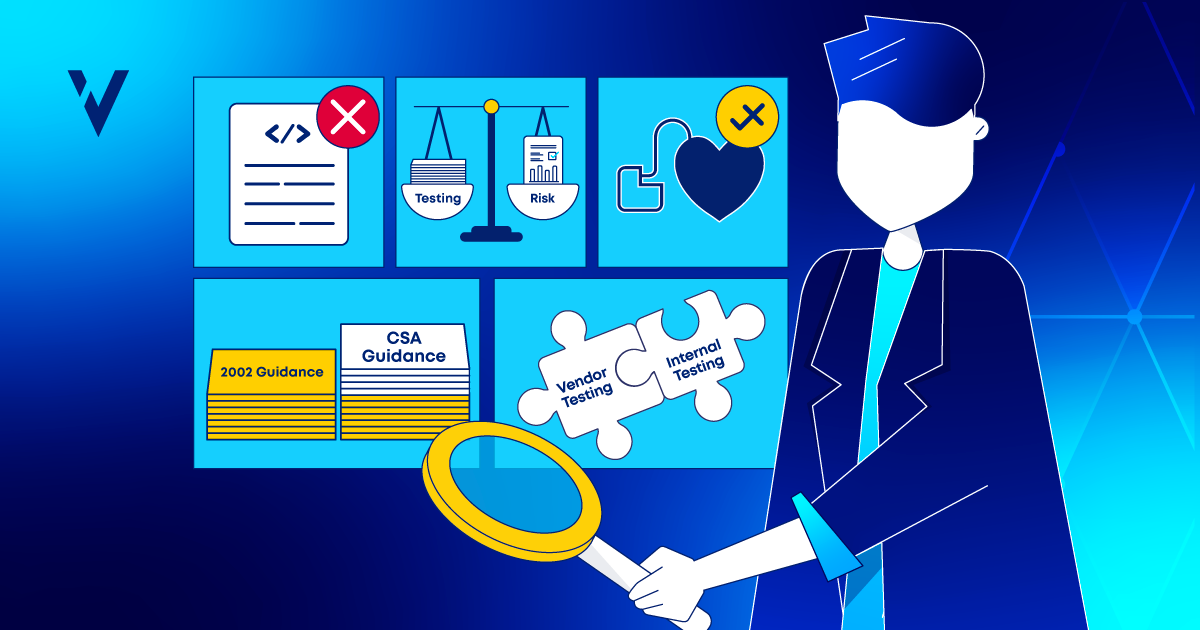Changing Compliance-Centric Mindsets
This blog is the second of a three-part series focused on FDA’s Computer Software Assurance (CSA) initiative. If you didn’t get a chance to read the first write-up on how to accelerate CSA adoption, click here.
Because I Said So
Nobody likes being told what to do, especially if, when you ask “why”, the answer given is “because I said so”. This is what happens in life science companies when an individual with approval authority operates with a compliance-centric mindset and won’t sign-off unless you do what they say. Metaphorically speaking, it’s analogous to hitting someone over the head with a compliance hammer.
Without understanding why, you comply. What happens next is people find workarounds, shortcuts, or hide things. Control is lost, compliance risk increases, and quality suffers. This is when compliance-centric mindsets rue the day.
It’s important to understand that compliance alone doesn’t guarantee quality. A paradigm shift is necessary; focus must be placed on quality. But this requires a change in perspective; mindsets must change.
Changing Compliance-Centric Mindsets
Changing mindsets from compliance-centric to quality-focused isn’t easy. It’s possibly the most difficult change to make, but it’s necessary for a quality culture to take hold.
| “Creating a culture of continuous improvement is a difficult and long-term process, but it has been central to the success of leading companies in many other industries.” – Mckinsey (1) |
What an organization can do to effect change is to first recognize they have a problem. Once recognized, then something can be done about it. Clear direction must come from the top. Objectives must be clarified along with goals. This requires an investment in time and money, and it’s not going to happen right away. This type of change takes time.
Technology as a Catalyst for Change
One way to make change happen is to implement a technology solution. With a new technology solution, the proverbial slate can be wiped clean and teams can be given the opportunity to find a better solution. Done correctly, this fosters collaboration and the ability to move forward with a common purpose. However, make sure old practices are not replicated in the system because technology is great at amplifying “bad practices”, making things worse rather than better.
Quality is a Top FDA Priority
One of FDA’s top priorities is to focus on quality (2). In part three of this series, we’ll show how technology, specifically the ValGenesis VLMS, can help organizations move away from compliance-centric mindsets to a qualify-focused culture (3). You’ll gain insight on how technology can be implemented to effect positive change and improve quality.
Next up…
How ValGenesis VLMS fosters a Quality-Focused Culture
(blog 3 of 3)
Resources
(1) Quest for Excellence: Driving a Step Change in Medical Products Operations,
McKinsey’s Global Medical Product Operations Practice
(2) FDA 2018-2020 STRATEGIC PRIORITIES
Center for Devices and Radiological Health 2018
(3) Changing compliance-centric mindsets to a quality-focused culture – A case for FDA’s Case for Quality, Journal of Validation Technology Vol. 25, Issue 6, Dec 2019, S. Thompson



